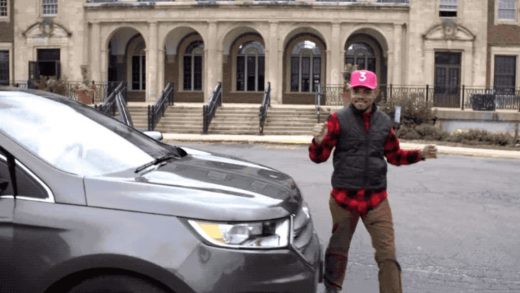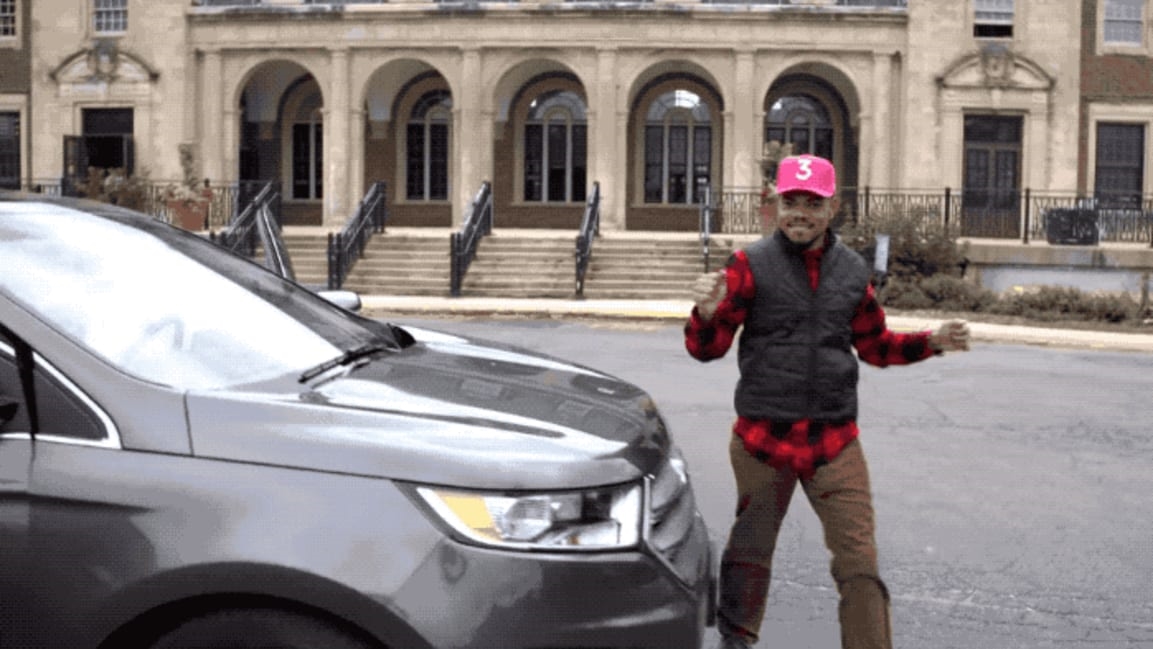How Lyft built its $24 billion brand image with pop culture
Lyft was always a bit . . . different. While Uber smashed and grabbed its way around the world to become not only synonymous with ride-hailing but also the verb to describe it, it did so with a cool, sleek brand design. Black and white. It courted celebrities, but ones which helped amplify its baller ethos.
Lyft’s first logo, on the other hand, was a giant, fuzzy pink mustache.
The Glowstache may have been officially retired in 2016 (RIP Glowstache!), but it symbolized the warm, fun, and friendly vibe Lyft was going for from the start. It was using cuddly cute to combat the cold severity of Uber, and that approach also extended into its marketing, with a strategy to use the fun of pop culture to buoy its brand. Even its first ad back in 2014 used brightly colored animation to explain what and who the company was. Since then, Lyft branched out into celebrity-driven ad campaigns, branded entertainment, and brand partnerships all aimed at showing us just how fun-loving a ride-hailing app could be.
Branded entertainment is a tricky business. It’s a balance between making something cool enough people will actually want to watch and enjoy while still getting the brand in there enough that it doesn’t distract. But again, juuuust enough that somebody remembers who paid for it. Two Lyft efforts that managed to pull that off were Kevin Hart: Lyft Legend and Undercover Lyft.
In 2017, Lyft entertainment teamed with Kevin Hart to create a web series for the comedians’ LOL Network. With two season so far, it seems there’s plenty of mileage in Hart dressed up as a Lyft driver named Donald Mac, pranking unsuspecting riders. The series is produced by Lyft Entertainment, Hartbeat Productions, Free Period Productions, and Pygmy Wolf Productions in association with Lionsgate.
Undercover Lyft takes the dressed-up celebrity prank a step further by basically using a different celebrity for each episode. So far, the show has featured Chance The Rapper, DJ Khaled, Taraji P. Henson, and Odell Beckham Jr., among others.
Of course, both take place in a Lyft ride. The brand then perhaps doesn’t need to smash a commercial message over our heads, because its service and brand are quietly at the center of the action.
But when Billy Eichner’s Billy On The Street ditched TV and became a Funny or Die web series for its sixth and final season, Lyft took a more traditional backseat (sorry) role as a presenting sponsor of the show.
Amid the downfall of Uber cofounder Travis Kalanick, that company’s bro culture issues, and ill-timed price surging, Lyft pushed to counter with its friendly bonafides. Its ad campaign focused on the idea that people want to support companies that are also full of good people, with an unspoken, underlying message of “You don’t really want to ride with a company of d-bags, do you?” To ask that question, the brand got friendly celebrities like Jeff Bridges, Jordan Peele, and Tilda Swinton.
Who doesn’t like those guys?
Even in its brand partnerships, Lyft tried to either tap pop culture or just generally make people’s lives better. A partnership with Netflix to promote the second season of Stranger Things spawned “Strange Mode,” which turned Lyft cars into mobile horror shows.
There was also Taco Bell’s “Taco Mode” that gave out a free tacos if you hit up a Taco Bell drive-thru on your way to wherever you were going. The brand also teamed with Delta to award Delta reward points with Lyft rides to and from the airport, and Disney to create a shuttle service called Minnie Vans.
Whether it’s shuttling you to Disney World, shoving tacos in your face, or getting celebrities to dress up and drive you around, between Lyft Entertainment and its overall marketing, Lyft does a pretty good job using pop culture as a brand tool. The quality of it all may be debatable, but by sheer volume and consistent output, the brand’s image of fun and friendly is firmly entrenched. The Glowstache may be dead, but its goofy spirit lives on.
Fast Company , Read Full Story
(15)



